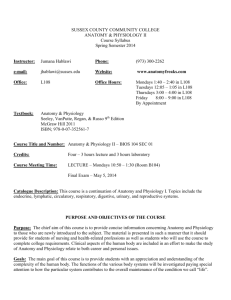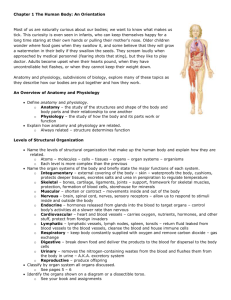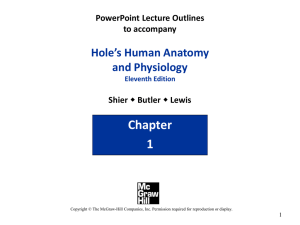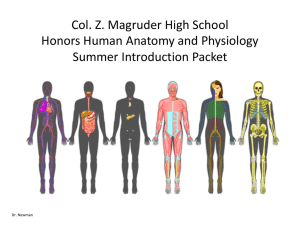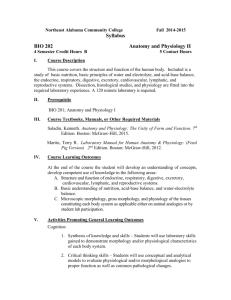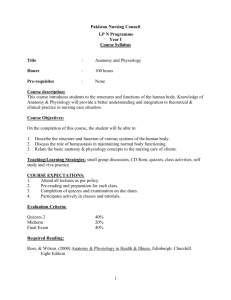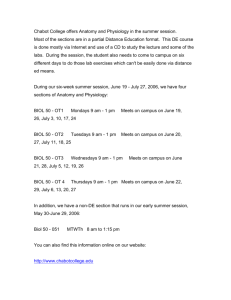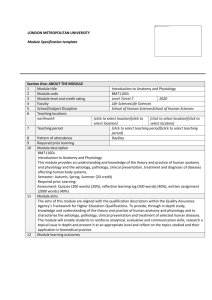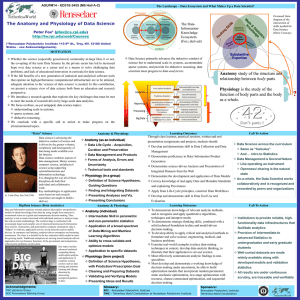Health Sciences 1 - Buncombe County Schools
advertisement
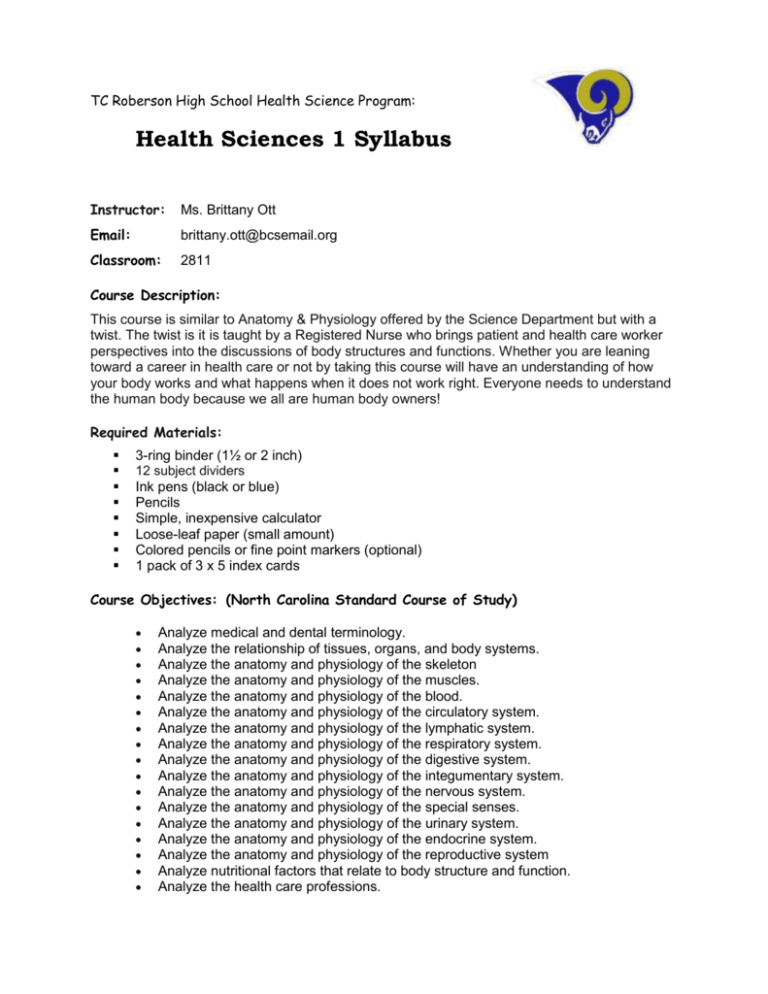
TC Roberson High School Health Science Program: Health Sciences 1 Syllabus Instructor: Ms. Brittany Ott Email: brittany.ott@bcsemail.org Classroom: 2811 Course Description: This course is similar to Anatomy & Physiology offered by the Science Department but with a twist. The twist is it is taught by a Registered Nurse who brings patient and health care worker perspectives into the discussions of body structures and functions. Whether you are leaning toward a career in health care or not by taking this course will have an understanding of how your body works and what happens when it does not work right. Everyone needs to understand the human body because we all are human body owners! Required Materials: 3-ring binder (1½ or 2 inch) 12 subject dividers Ink pens (black or blue) Pencils Simple, inexpensive calculator Loose-leaf paper (small amount) Colored pencils or fine point markers (optional) 1 pack of 3 x 5 index cards Course Objectives: (North Carolina Standard Course of Study) Analyze medical and dental terminology. Analyze the relationship of tissues, organs, and body systems. Analyze the anatomy and physiology of the skeleton Analyze the anatomy and physiology of the muscles. Analyze the anatomy and physiology of the blood. Analyze the anatomy and physiology of the circulatory system. Analyze the anatomy and physiology of the lymphatic system. Analyze the anatomy and physiology of the respiratory system. Analyze the anatomy and physiology of the digestive system. Analyze the anatomy and physiology of the integumentary system. Analyze the anatomy and physiology of the nervous system. Analyze the anatomy and physiology of the special senses. Analyze the anatomy and physiology of the urinary system. Analyze the anatomy and physiology of the endocrine system. Analyze the anatomy and physiology of the reproductive system Analyze nutritional factors that relate to body structure and function. Analyze the health care professions. Health Sciences 1: Pacing Guide Fall 2013 Planned Start Date Course Objective 08/21/13 08/28/13 1.01: What is structural organization? 1.02: What are the skeletal system structures? 08/30/13 1.03: What are the functions/disorders of the skeletal system? 1.04: What is the structure of the muscular system? 1.05: What are the functions/disorders of the muscular system? 2.01: What are the circulatory system structures? 2.02: What are the functions/disorders of the circulatory system? 2.03: What are the lymphatic system structures? 09/05/13 09/09/13 09/12/13 09/17/13 9/26/13 09/30/13 10/03/13 10/08/13 10/14/13 10/16/13 10/23/13 10/25/13 11/05/13 11/07/13 11/13/13 11/15/13 11/20/13 11/22/13 12/03/13 12/06/13 12/12/13 12/16/13 2.04: What are the functions/disorders of the lymphatic system? 2.05: What are the respiratory system structures? 2.06: What are the functions/ disorders of the respiratory system? 2.07: What are the digestive system structures? 2.08: What are the functions/disorders of the digestive system? 3.01:What are the integumentary system structures? 3.02: What are the functions/disorders of the integumentary system? 3.03: What are the nervous system structures? 3.04: What are the functions/disorders of the nervous system? 3.05: What are the sensory system structures? 3.06: What are the functions/disorders of the sensory system? 4.01: What are the urinary system structures? 4.02: What are the functions/disorders of the urinary system? 4.03: What are the endocrine system structures? 4.04: What are the functions/disorders of the endocrine system? 4.05: What are the reproductive system structures? 4.06: What are the functions/disorders of the reproductive system?

